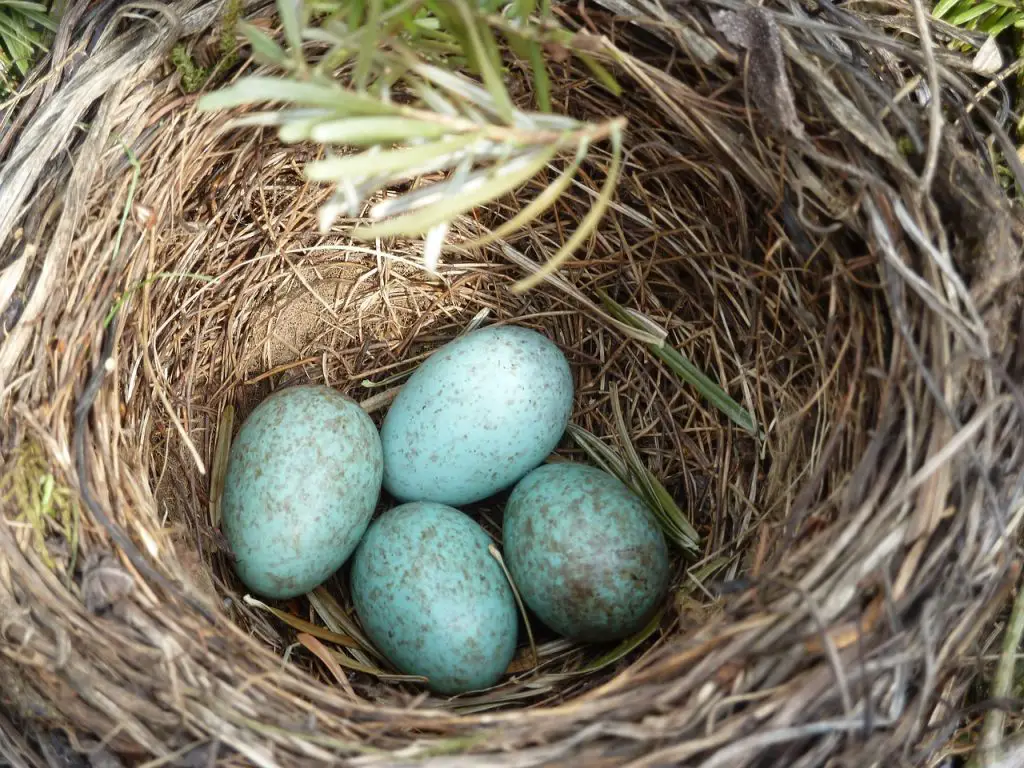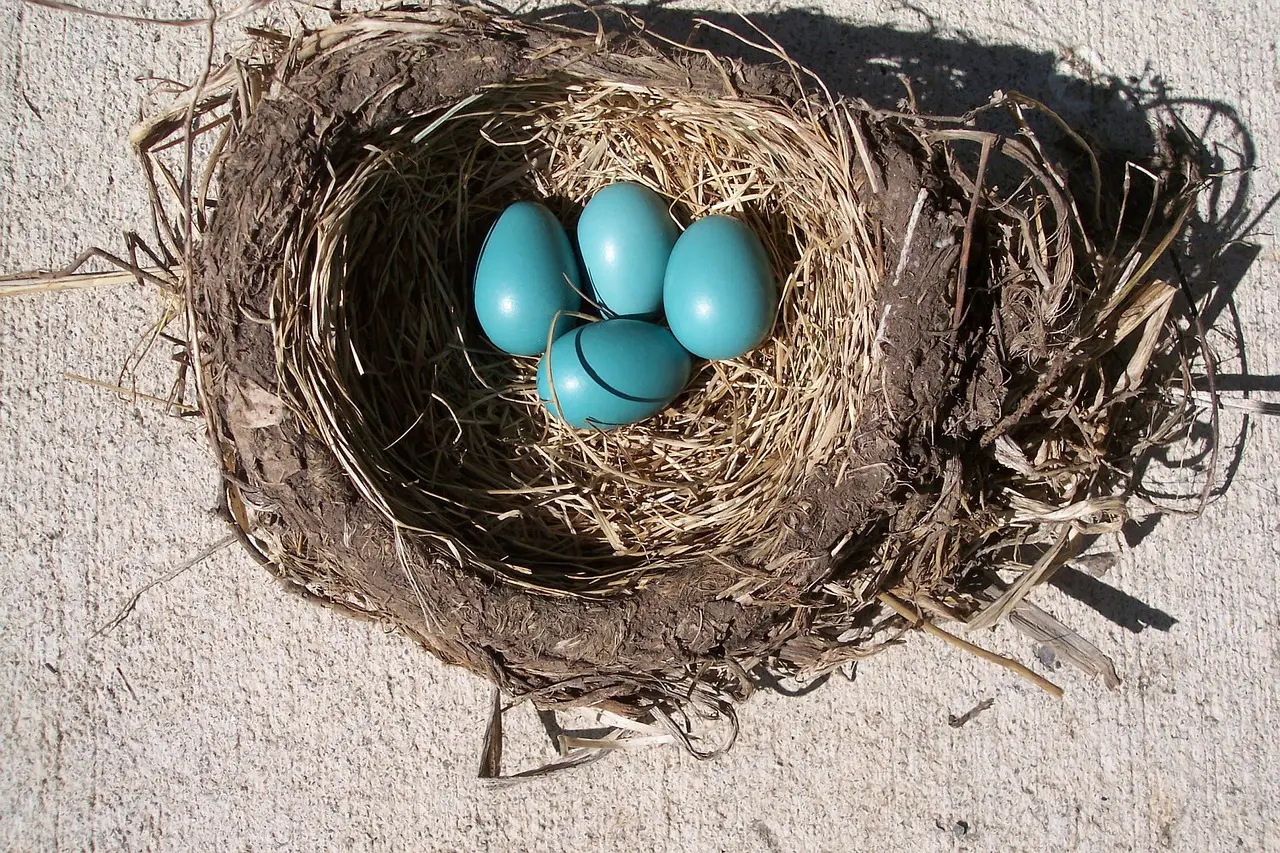The number of eggs that a bird lays ranges dramatically. While some birds only lay one egg, others, such as the ostrich may have clutches of up to fifty. There are some main reasons why this occurs which we will look at here.
Birds from the same families generally lay the same number of eggs. However, the size of the bird, their habitat, location, age, and if they are precocial or altricial can alter the number of eggs laid in a clutch.
While you may think that the more eggs laid the greater chances of survival this is not the case as I will explain here.
What is a clutch of eggs?
A clutch is the number of eggs laid in a sequence by one female in a single nesting or breeding attempt.

Bird size
Larger birds that reproduce slowly and only breed when they get to a certain age often have smaller clutches of eggs. Because the young need to be around the adults longer, they have a higher success rate of survival.
Because there are only a few eggs in the clutch, the adult can care for them all, increasing their mortality rate. If there were more than the adult could handle, then food and energy resources would be stretched.
Small birds often lay more eggs as they develop quickly and don’t need as much care before they leave. Smaller birds usually don’t live as long as larger species and have higher mortality. For the species to survive, smaller birds breed earlier than larger birds, and more eggs are laid.
Do you know why birds lose their feathers? Find out here
Location
The amount of eggs laid in a clutch is determined by the location of where the bird lives and breeds. This can lead to varied numbers even between the same species in different habitats or areas.
The location determines clutch size due to one main reason, the food supply. If the food supply is good in quality and quantity, then the clutch will be bigger.
The size of the clutch also depends on the geographical location. More eggs are laid in temperate zones than near the equator, in low altitudes than high, inland than coastal, and on islands rather than the mainland.
Although there is a good food supply near the equator, the smaller clutches are due to the bird populations in those areas. Because the food supply is consistent throughout the year in these areas, there is already enough birds for the survival of the species without laying huge clutches.
In areas with harsh winters, food shortages can increase mortality, so small populations are ideal. By laying fewer eggs, the birds can feed throughout the summer and raise their chicks without the risk of shortages.
Birds that live in extreme conditions can often only lay one clutch per year, whereas in more favourable conditions have a longer breeding season and can find another clutch in the same year.
Size and age
The size and age of the female play a huge part in the number of eggs laid. Younger females, especially those breeding for the first time, generally have smaller clutches and smaller eggs than experienced, older females.
Younger birds are more inexperienced and have more chance of failure in their first breeding season.
Altricial or Precocial
Altricial birds are dependent on their parents care when young. Without their parents feeding them and looking after them, they wouldn’t survive. Altricial young are the naked songbird in their nest calling for their mother. Precocial young, for example, a baby chicken, can fend for themselves almost straight away.
Altricial birds often have smaller clutch sizes than precocial birds because they have to look after them. The demands of feeding their young while maintaining their strength mean that the numbers have to be lower.
Precocial chicks do not have the same problems as altricial chicks and do not need attention from their mothers, so larger clutches can be expected.
Are all birds born with feathers? The answer may surprise you
Predators
Birds, generally smaller species, lay more eggs due to their mortality rates. Because they are more at risk from predators they need bigger clutch sizes to ensure the survival of some of their young.
However, some will also have smaller clutches. Smaller clutches don’t attract as many predators as large clutches and can be more inconspicuous and hidden. Birds that are at risk from predators often grow quickly so that they can leave the nest as soon as possible.
Smaller clutches help birds grow quicker. Because the adult will bring food constantly to the nest, fewer birds mean a bigger share, allowing them to mature quicker.
Families
While location can make a difference in the clutch size even between birds of the same species, the numbers are generally even. This continues not only in the species but also through their whole family.
Doves and pigeons are from the same family and generally only have two eggs. Because they feed their chicks crop milk for the first few days, a secretion from the crop, they can only have two chicks. Any more than this, and they wouldn’t have enough crop milk to feed them.
Most seabirds only have one chick as they normally have to fly further to find food, sometimes for days, and two chicks wouldn’t be able to survive on the amount of food brought back.
The shape of the egg can have a bearing on the number of eggs laid. Shorebirds lay eggs that fit together so that they can cover them completely. Four eggs are the optimal size that they can sit on without missing one out and they will turn them around so that they fit together in a pattern.
Time of the year
Which season birds lay their eggs can change the number of eggs laid. When birds lay eggs late in the season, the eggs are generally smaller. There is less food not only for the young when they are first born but also when they leave the nest, so clutches laid in the late season are much more at risk of starvation.
Birds that lay their eggs earlier are often healthier individuals. By raising their young earlier, they are allowing them more time to grow before the winter comes. Birds that breed early are much more likely to survive than those born late season.
Do you know why some birds hang around animals? Find out here

